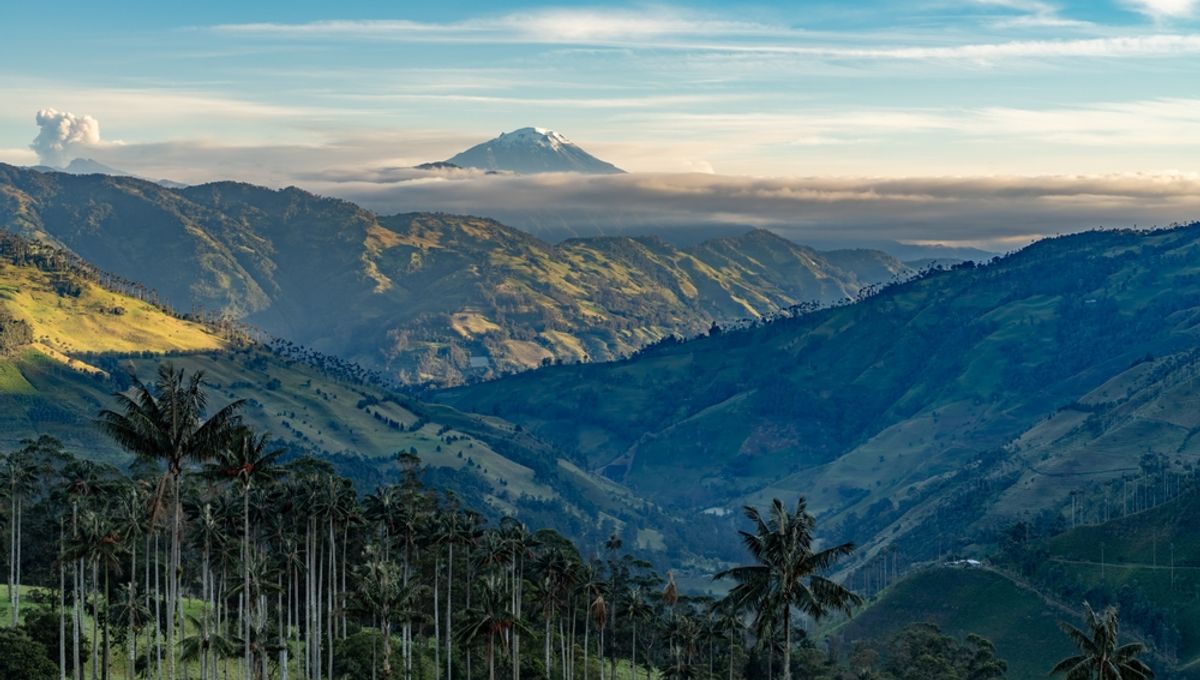
Tropical forests can help to mellow the impact of climate change by acting as a carbon sink, sucking up more carbon from the atmosphere than they pump out. However, new research has suggested that a powerful El Niño event managed to “switch off” this ability in the forests in South America, which raises some worrying possibilities for the future.
Forests act as carbon sinks because they absorb carbon dioxide from the atmosphere and transform it into biomass through photosynthesis. As part of the carbon cycle, they can also release this carbon back into the atmosphere when the forests are cleared and the trees biodegrade.
Most of the time, healthy forests absorb more carbon than they emit – but that changed after the formidable El Niño climate event in 2015 to 2016 which resulted in a parching drought and some of the hottest temperatures ever recorded in South America.
In a new study, scientists at the University of Leeds have worked out that the extreme event meant that forests in South America were not taking in as much carbon as before because trees were dying off faster than they were growing back.
As a whole, it meant the forests were no longer serving as a carbon sink.
The team studied 123 plots of South American forest, 119 of which had monthly temperature increases of over 0.5°C (0.9°F), and 99 experienced water shortages. Prior to the 2015/2016 El Niño, they found that the plots were storing and sequestering around one-third of a tonne of carbon per hectare per year. After the event, the amount of carbon being captured was “indistinguishable from zero.” The researchers explain that this was primarily the result of biomass being lost through the death of trees.
The El Niño-Southern Oscillation cycle describes how a pattern of climate fluctuations in the Pacific Ocean has a global impact on the world – from wind, temperature, and rainfall patterns to the intensity of hurricane seasons and even the distribution of fish in the seas.
Every couple of years, it flips between El Niño, which is commonly referred to as the “warm phase”, and La Niña, the “cold phase”. For South America, El Niño typically results in drier and warmer weather, raising the risk of wildfires and tree death.
As the researchers explain, the strong El Niño event showed the world’s forests are sensitive to wider climate shifts in the world, which is relevant when we look to the future of the growing climate crisis.
“Tropical forests in the Amazon have played a key role in slowing the build-up of carbon dioxide in the atmosphere,” Dr Amy Bennett, study author from the School of Geography at the University of Leeds, said in a statement.
“Scientists have known that the trees in the Amazon are sensitive to changes in temperature and water availability, but we do not know how individual forests could be changed by future climate change,” she added.
“Investigating what happened in the Amazon during this huge El Niño event gave us a window into the future by showing how unprecedented hot and dry weather impacts forests.”
There is some hope, however. The study found that the most vulnerable portions of forests were on the periphery and already fragmented from drought stress, while the more robust forest regions were shown to be surprisingly resilient and maintained the ability to bounce back after a bad run.
“We might have expected wetter forests to be more vulnerable to climate anomalies as they contain fewer drought-adapted species and drier forests to be more resistant because they contain more. Yet, our results show that it was exactly where trees are most likely to be pre-adapted to drought that the greatest relative biomass loss was measured,” a draft of the paper reads.
One of the keys to addressing the problem, the researchers say, is to ensure that these strong foundations are not lost through deforestation and aggressive land clearance.
“Where tree mortality increased was in the drier areas on the Amazon periphery where forests were already fragmented. Knowing these risks, conservationists and resource managers can take steps to protect them,” explained Professor Oliver Phillips, an ecologist at the University of Leeds who worked on the research.
“Through the complex dynamics that happen in forest environments, land clearance makes the environment drier and hotter, further stressing the remaining trees. So, the big challenge is to keep forests standing in the first place. If we can do that, then our on-the-ground evidence shows they can continue to help lock up carbon and slow climate change,” he added.
The new study was published in the journal Nature Climate Change.
Source Link: Extreme El Niño Can "Switch Off" South America’s Forest Carbon Sink